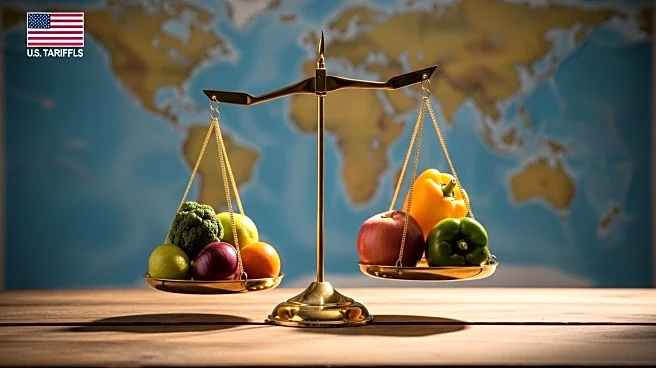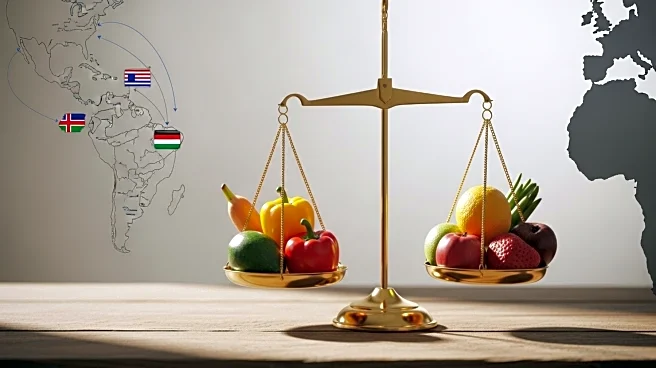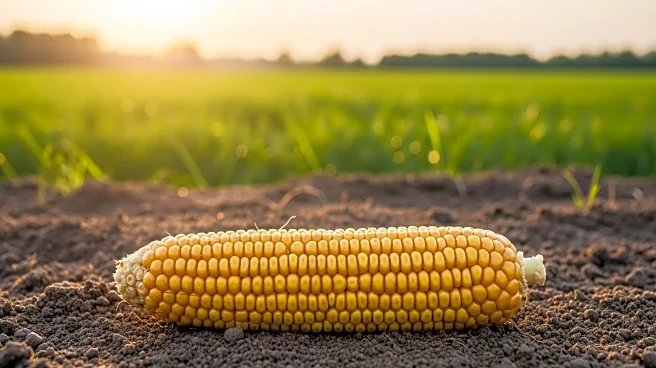What's Happening?
Recent U.S. tariffs and trade agreements are significantly altering global agricultural trade patterns. Higher tariffs on Brazilian beef are expected to redirect beef exports to the U.S. from countries like Mexico and Australia, while Brazil seeks alternative markets. Additionally, Southeast Asian nations are increasing their purchases of U.S. grains and oilseeds, displacing supplies from Australia, Canada, and Russia. This shift is driven by trade deals that lower tariffs on exports to the U.S., with countries like Indonesia and Bangladesh already agreeing to increased purchases. The U.S. Department of Agriculture data indicates that Asia, a major food importer, accounts for about 30% of global wheat, corn, and soymeal imports, making it a vital market for suppliers.
Why It's Important?
The reshaping of agricultural trade flows has significant implications for global markets and U.S. agricultural exports. By increasing exports to Southeast Asia, the U.S. strengthens its position in a region with rising consumption due to population growth and increasing incomes. This shift could lead to competitive pricing pressures on rival suppliers from the Black Sea and South America, potentially increasing shipping costs for these regions. For U.S. farmers and exporters, the new trade deals offer expanded market access and opportunities to boost sales, while countries like Brazil may face challenges in finding new markets for their beef exports.
What's Next?
As U.S. tariffs continue to impact global trade, countries affected by these changes may seek new trade agreements or adjust their export strategies to mitigate losses. Southeast Asian nations may further increase their purchases of U.S. agricultural products, potentially leading to more trade deals that favor U.S. exports. Additionally, the ongoing adjustments in global beef trade flows could prompt Brazil to explore new markets or strengthen existing trade relationships with countries outside the U.S.
Beyond the Headlines
The broader implications of these trade shifts include potential changes in global agricultural supply chains and pricing dynamics. As U.S. exports increase, rival suppliers may need to innovate or diversify their offerings to maintain market share. Additionally, the environmental impact of increased agricultural production and transportation could become a topic of concern, prompting discussions on sustainable practices in global trade.













